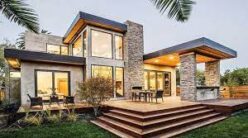In the realm of interior design, 3d foam wall panels price stand as timeless symbols of industrial charm and rustic elegance. However, integrating authentic brickwork into modern spaces often poses challenges ranging from cost to structural feasibility. Enter brick wall panels – a versatile solution that combines the allure of traditional brick with the practicality of modern construction. In this comprehensive guide, we delve into the world of brick wall panels, exploring their benefits, installation methods, design possibilities, and more.
Unraveling the Advantages:
Brick wall panels offer a plethora of advantages over conventional brick walls, making them an increasingly popular choice among homeowners, designers, and architects alike. Firstly, they are significantly lighter in weight, facilitating easier transportation and installation. This characteristic not only reduces construction costs but also expands the scope of applications, allowing brick aesthetics to adorn diverse spaces without imposing structural limitations.
Moreover, brick wall panels boast remarkable versatility in terms of design and customization. Unlike traditional bricks, which are constrained by their inherent dimensions, panel-based systems offer a wide array of sizes, shapes, textures, and colors. This versatility enables designers to tailor the appearance of brickwork to suit specific aesthetic preferences and project requirements, whether it be a contemporary loft or a classic industrial setting.
Installation Made Effortless:
One of the most compelling aspects of brick wall panels is their simplicity of installation. Unlike the labor-intensive process of laying individual bricks, panel systems can be swiftly installed using basic tools and techniques. The panels are typically designed to interlock seamlessly, ensuring a uniform and professional finish with minimal effort.
Furthermore, brick wall panels are suitable for both interior and exterior applications, providing a consistent aesthetic across different areas of a building. Whether used as accent walls in living rooms, facades on commercial buildings, or backdrop elements in retail spaces, these panels offer unparalleled adaptability and ease of installation.
Exploring Design Possibilities:
From contemporary chic to rustic charm, brick wall panels offer an extensive range of design possibilities limited only by imagination. Textures can range from smooth and sleek to rough and weathered, allowing for the creation of diverse visual effects and tactile experiences. Similarly, color options span the spectrum from traditional red bricks to earthy tones and even vibrant hues, enabling designers to evoke specific moods and atmospheres within a space.
Moreover, brick wall panels can be integrated with other materials such as wood, metal, or glass to create striking juxtapositions and unique design statements. Whether used as focal points or as cohesive elements within a larger architectural composition, these panels lend character and personality to any environment, elevating the overall aesthetic appeal.
Conclusion:
In conclusion, brick wall panels represent a harmonious fusion of aesthetics and functionality, offering a versatile solution for modern design challenges. With their lightweight construction, easy installation, and limitless design possibilities, these panels have revolutionized the way brickwork is incorporated into contemporary spaces. Whether seeking to evoke a sense of heritage, add warmth to minimalist interiors, or create an industrial-inspired ambiance, brick wall panels provide a compelling canvas for creative expression. As the demand for innovative interior and exterior solutions continues to grow, brick wall panels stand poised to remain a cornerstone of architectural design for years to come.





